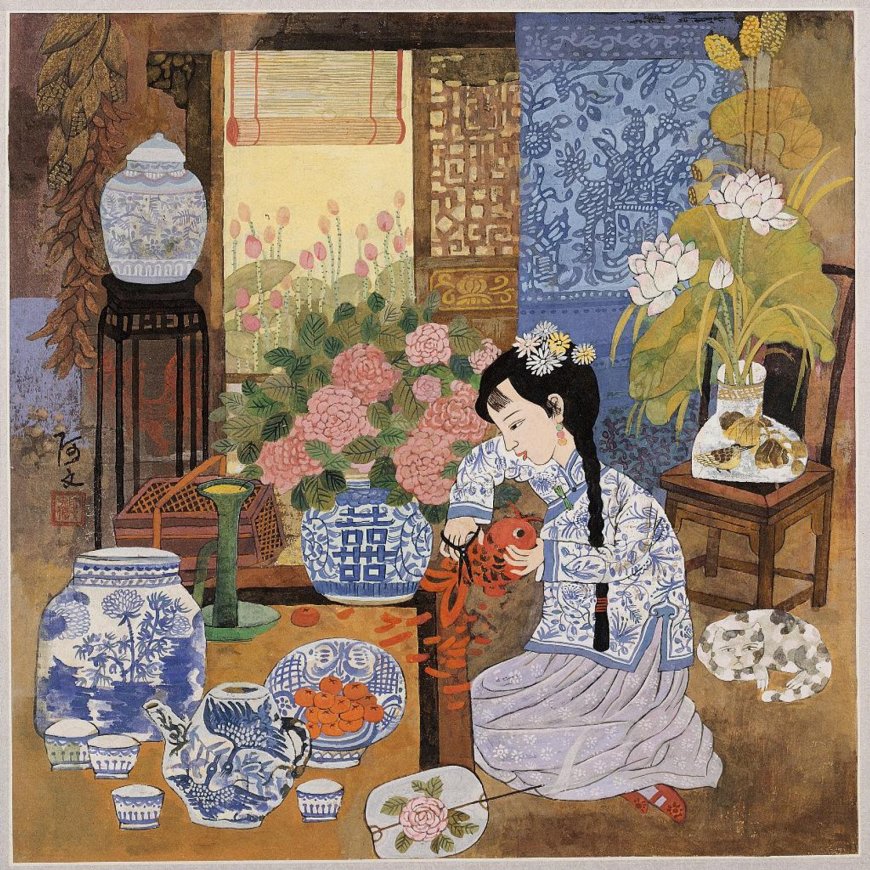What was the role and significance of art in ancient China

Art in ancient China played a vital role in expressing cultural values, religious beliefs, and social status. From the earliest dynasties to the end of imperial rule, Chinese art reflected the evolution of philosophy, politics, and everyday life. It was more than decoration it was a means of communication, education, and spiritual connection.
The origins of Chinese art date back to prehistoric times, with early artifacts like pottery, jade carvings, and bronze vessels. During the Neolithic period (c. 50002000 BCE), Chinese people created functional and decorative pottery, often with geometric patterns and animal motifs. These early creations already showed a sense of beauty and craftsmanship that would define Chinese art throughout history.
During the Shang (16001046 BCE) and Zhou (1046256 BCE) dynasties, bronze art became highly developed. Elaborately designed bronze vessels were used in rituals and ceremonies to honor ancestors. These objects were not only technically advanced but also rich in symbolic meaning, often decorated with mythical creatures like dragons and taotie (monster masks). Bronze work showed the importance of spiritual practices and the belief in the afterlife.
In the Han Dynasty (206 BCE220 CE), Chinese art began to reflect Confucian values such as respect for elders, loyalty, and order. Tomb art, including murals and figurines, depicted daily life, farming, and family gatherings. These artworks helped guide the soul in the afterlife and preserved the social ideals of the living world.
The Tang Dynasty (618907 CE) is often called a golden age for Chinese culture and art. Painting, sculpture, music, and literature flourished. Buddhist art reached its peak, with large statues, cave murals (like those at Dunhuang), and religious paintings. The Tang period also saw the rise of figure painting, especially of court ladies, musicians, and horses, showing elegance, movement, and beauty.
Landscape painting became dominant in the Song Dynasty (9601279 CE). Artists like Fan Kuan and Guo Xi created majestic images of mountains, rivers, and trees, reflecting Daoist ideals of harmony with nature. These paintings were not just scenic views; they conveyed emotions and philosophical ideas. Artists used black ink and simple brushstrokes to capture the spirit, or "qi," of the scene an important principle in Chinese art.
Calligraphy was another major form of artistic expression in ancient China. Writing characters with a brush required skill, rhythm, and creativity. Calligraphy was considered a reflection of the artists inner self and was highly respected, even more than painting in some periods.
Art in ancient China also served political and educational purposes. Emperors commissioned grand artworks to demonstrate their power, while scholars used painting and poetry to express their values. Artistic achievements were closely linked to social status and intellectual development.
In summary, art in ancient China was deeply woven into the fabric of society. Whether used in rituals, to honor ancestors, reflect nature, or express personal feelings, it was a powerful tool that shaped Chinese civilization. Its lasting legacy can still be seen today in Chinese culture and global art history.
































